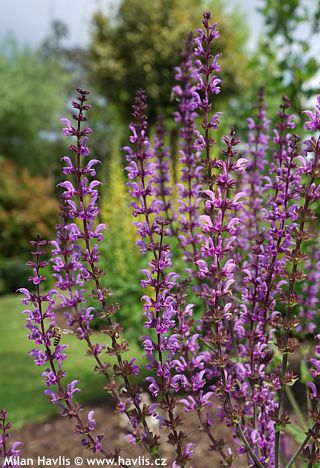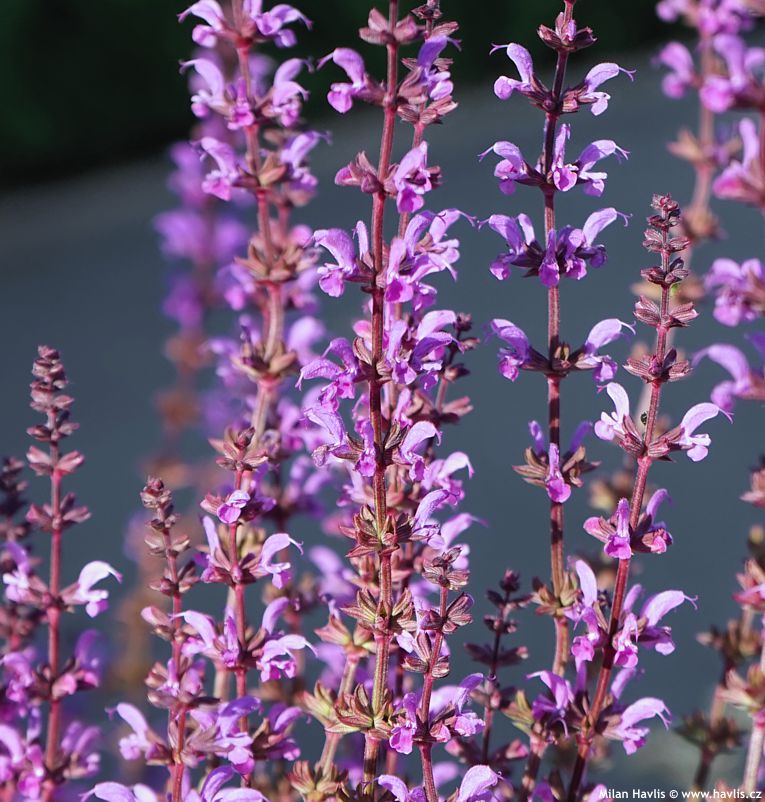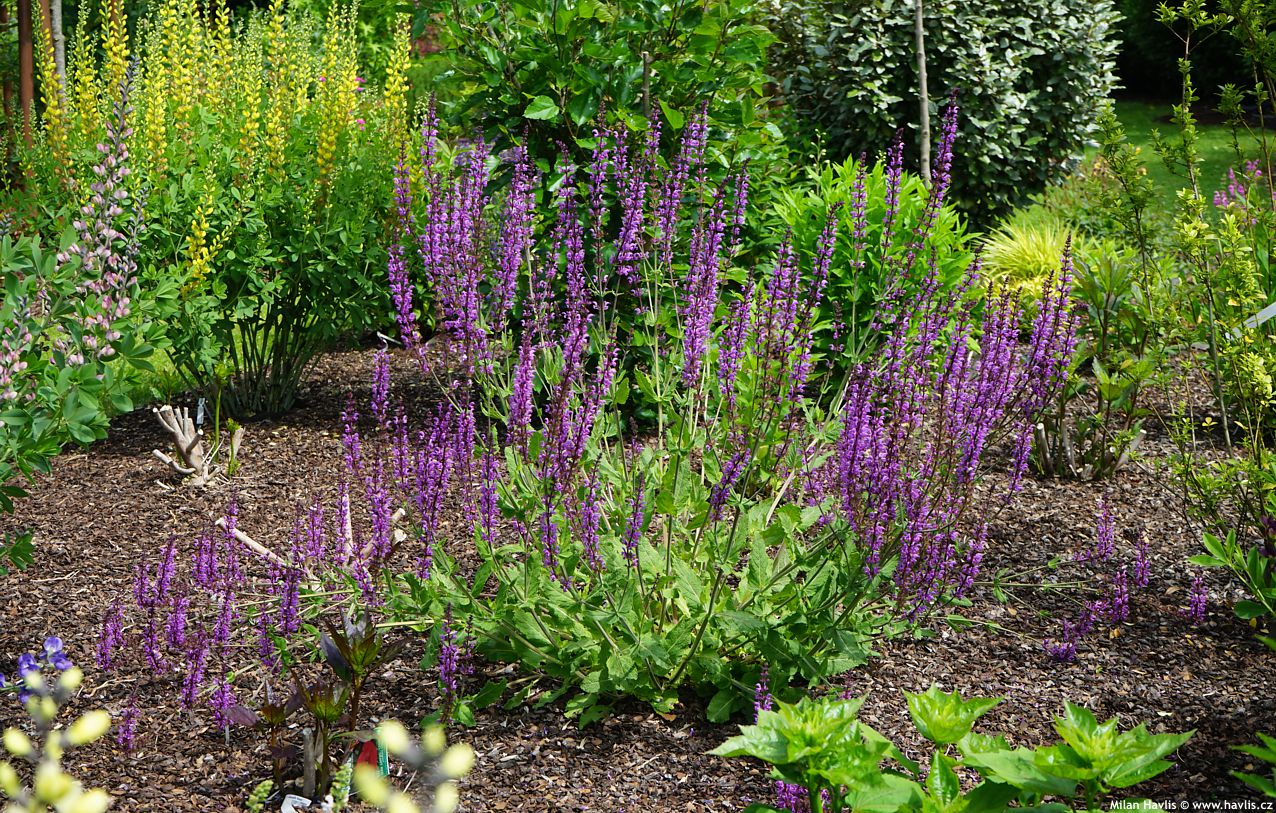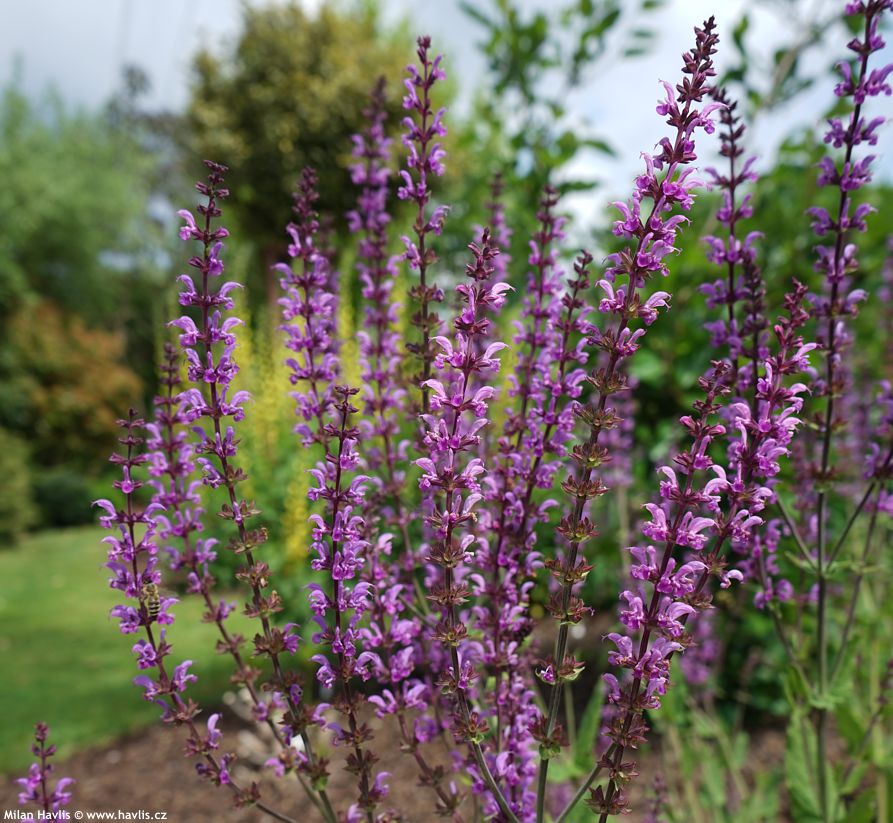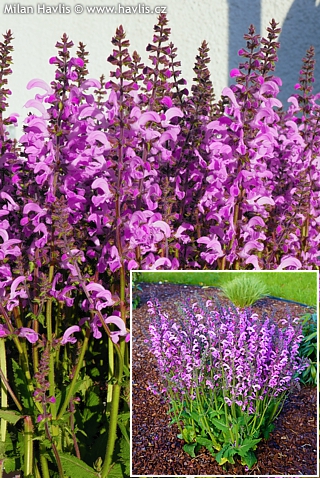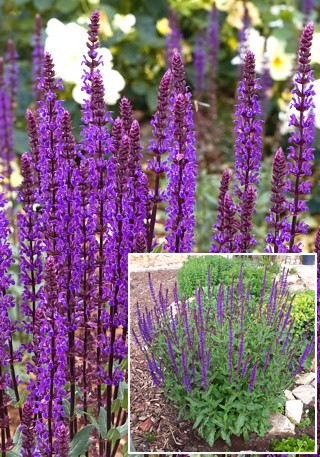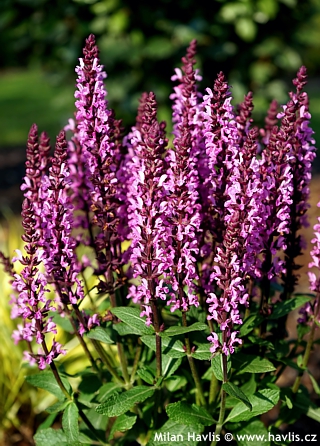Salvia x sylvestris 'SERENADE' hybrid wood sage
Salvia
Salvia is a large genus, containing about 900 species. In our climate mostly common (evergreen) sage is grown for culinary uses. Also popular are those of subtropical origin that are used here as annuals with long flowering season, especially in public areas. We concentrate on herbaceous perennials which are reliable and trouble-free plants offering stunning colour display with little care.
Serenade is a hybrid salvia, a cross of salvia nemorosa and salvia pratensis. It bears medium large, nettle-like, most commonly rich lilac pink to purple violet flowers arranged in upright spikes atop 60-80 cm tall, deep purple blue stems. They are produced in profusion from late May for about 6 weeks and if you cut the stems off just above the soil level after flowering and feed it a little, it will soon form a new, bushy clump that will remain handsome until the end of the season and reward you with a few flowering stems in late summer. Leaves are medium green, wrinkled, coarsely toothed, broadly lance-shaped, and appear mostly near the ground. Its habit is quite airy and side stems may bend, yet its flowering spikes are erect. Thanks to thin and tall it brings movement to your garden even in the slightest breeze. Serenade was developed by Piet Oudolf from the Netherlands.
Sage will grow in almost any well-drained soil. For best results grow it in light, humus-rich, well-drained soil in full sun or light shade. It needs no fertilizing, only in very poor or compacted soils it will benefit from occasional feeding with a balanced fertilizer. Meadow clary requires warm and free-draining soil. In early spring remove all above-ground parts except for rosette of new or over-wintered, healthy leaves lying flat on the ground. It is hardy to about -34 °C (USDA zone 4) and will grow in outdoor pots, too.
Last update 09-10-2023

































